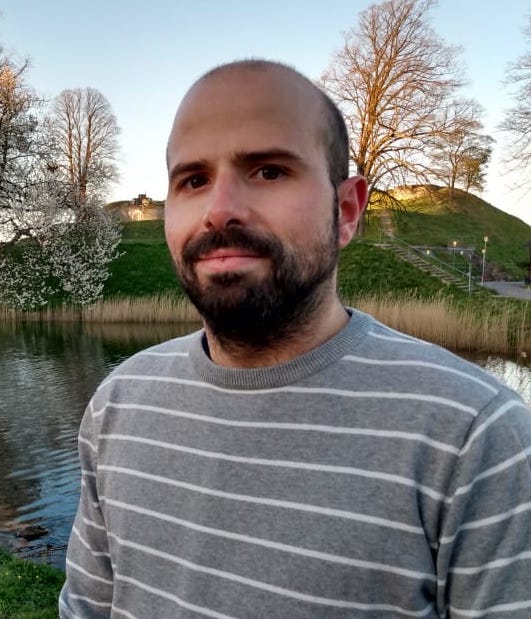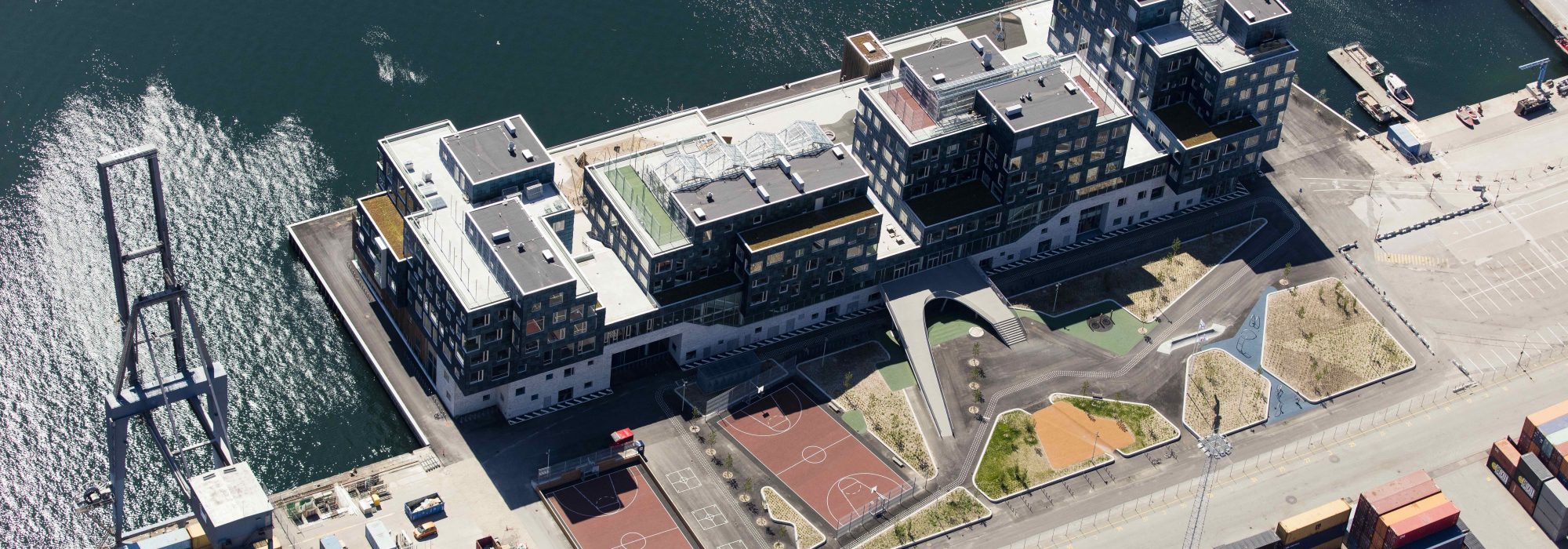A novel platform, to be developed within the project EMB3Rs, will allow everyone in an energy community to explore ways of reusing excess thermal energy on site. Data from a living lab’s cutting-edge energy projects will help.
Perched on the edge of Copenhagen, overlooking the Øresund Strait, sits EnergyLab Nordhavn, a living laboratory for smart energy technologies, and up and coming business models.
The large-scale research and demonstration project has been a hive of activity for the last five years and is based on Copenhagen’s power grid and district heating network. However it also integrates nearby buildings, trialling cutting-edge energy devices and systems in industrial buildings, shops, schools and homes to help design the flexible energy networks of tomorrow.
For example, novel local district heating – with a small heat pump – has been demonstrated at the Harbour’s Cruise terminal while the electricity produced by some 12,000 solar panels on the Copenhagen International School has been closely monitored. Meanwhile, the use of spare heat pump capacity at a local supermarket has been trialled as has the smart control of heating systems in 85 apartments.
“We’ve had so many promising results,” says Christoffer Greisen, Project Manager of EnergyLab Nordhavn. “We’ve been able to unlock the flexibility in heating systems to alleviate the use of peak-load boilers in the district heating network and we’ve also connected storage batteries to the electricity grid to reduce peak load [on the electricity network].”
Along the way, EnergyLab Nordhavn has generated vast volumes of data on energy demand and supply from its buildings’ many smart meters. This data has been stored within EnergyLab’s data warehouse alongside additional information on, for example, carbon footprint and energy prices. Importantly, this data powerhouse is now available to energy projects such as EMB3Rs.
“The living lab has this experimental platform with all sorts of sensors and infrastructure that provide a range of data-streams,” points out Greisen. “We would very much like to see all of this used in new projects and collaborations, such as EMB3Rs.”
Re-using energy and data
The EU-project, EMB3Rs, is developing an excess Heat/Cold (HC) re-use matching platform to help users to determine the costs and benefits related to recovering industrial waste energy that would typically be released into the environment. The platform will show how excess heat and cold can be re-used as a valuable energy source for other industrial processes, district heating and other applications.
As part of this, researchers need to collect and analyse a wide range of data from open platforms and demonstrations across Europe, and EnergyLab Norhavn is making a great starting point. “EMB3Rs is really going to profit from all the practical work that has taken place at the EnergyLab in Nordhavn. Working with EnergyLab Norhavn, we have the opportunity to demonstrate the viability of alternative systems to other energy communities across Denmark,” says Tiago Sousa.
Sousa is a post-doctoral student at the Technical University of Denmark (DTU) with a strong interest in peer-to-peer markets that allow consumers and providers of heat and electricity to directly share their energy. He and colleagues have been developing tools and software that allow people to exchange energy using peer-to-peer trading instead of the usual retailers and markets.

“The EMB3Rs platform aims to show industrial sites, operators and regulators, how they can best re-use excess heat, which aligns with my research into new approaches to energy markets and peer-to-peer trading,” he says. “So, at DTU, we want to adapt the tools we have developed to show all EMB3Rs users that everyone in an energy community, [from home-owners to regulators], can have the same role as part of a more sustainable energy system.”
Crucially, much of the data from the EnergyLab Nordhavn is helping Sousa and colleagues to do just this. For example, using home automation systems, DTU has been able to collect detailed data on the energy consumption and indoor climate of 30 apartments in Nordhavn.
Indeed, to gain knowledge on consumer behaviour and help with future energy efficiency designs, one such flat had 2000 sensors installed measuring heat and carbon dioxide levels. As Sousa says: “We are already using this data in our initial studies.”
In addition, when Nordhavn’s supermarket first opened, Denmark-based heating and cooling business, Danfoss, installed heat recovery units to the building so surplus heat generated by its chillers could be re-used. Sousa and colleagues are also using the data on the heat produced by this supermarket.
At a later stage, Sousa and colleagues would also like to use the electricity data from EnergyLab Nordhavn, including that from the electricity generated by the solar panels on the Copenhagen International School. With its 12,000 solar glass panels, the school features one of the largest solar facades in the world and can generate up to 40% of its annual energy needs.
“We think that it could be important for EMB3Rs to also look at electricity data – the school at Nordhavn is just covered with solar panels so it will be good to use the data from here as well,” says Sousa.
Copenhagen International School has 12,000 solar glass panels, making this one of the largest solar facades in the world.
Data matters
But what about the thorny issue of data-sharing? For example, utility companies are often reluctant to exchange customer data with each other and also have concerns over data-leaks following researcher access.
What’s more, research organisations’ data management is also often linked to a project and specific funding. As Greisen highlights: “When funding finishes at the end of the project, then the data-stream is usually terminated.”
Given these issues, EnergyLab has worked hard to establish the necessary models for data exchange, and has also ensured that permissions to use energy data are not linked to any specific project within Nordhavn. As a result, its data is available for many projects in the future.
Sousa is pleased. “There are so many partners in Nordhavn that have such different perspectives, including the regulators, operators, and commercial partners,” he says. “So it is such a good thing that EnergyLab Nordhavn has this openness on data use, and we can use the data for EMB3Rs.”
Future aspirations
So with activities already well underway, what does the future hold for EMB3Rs and EnergyLab Nordhavn? Come the end of EMB3Rs, in August 2022, a platform will be in place that will inform industries if there is an easy way to save energy and reduce greenhouse gases. What’s more, the platform will allow these players to find out if investing in an infrastructure to re-use excess heat will pay off in the future.
The platform will also provide a means to match potential energy sources with energy users, when excess energy meets an energy demand. According to Sousa, one ambitious goal would be to develop a demonstrator that can track the market and match potential energy partners in real-time.
Greisen also highlights how the Danish Prime Minister, Mette Frederiksen met with the Prime Minister of Latvia, Arturs Karinš, at EnergyLab Nordhavn earlier this year to view the many project results. He believes this underlines the importance of EnergyLab Norhavn and its results.
“We really want to make EnergyLab a permanent living lab that will survive projects and we really want to keep all of our data-streams alive,” he says. “In this way, it can function as the basis for many more new projects, including EMB3Rs.”
